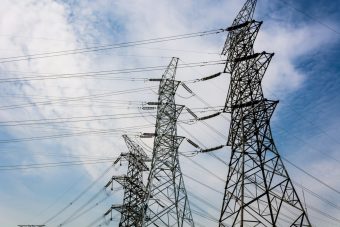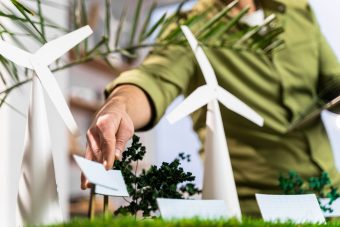According to the data of the International Renewable Energy Agency (IRENA) for the year 2023, Serbia currently has 137 megawatts of installed capacity in solar power plants, 511 MW of capacity in wind power plants and about 3150 MW of capacity from other renewable energy sources, the majority of which are hydropower plants. for Climate 101 Dr. Jelena Terzić from the Faculty of Electrical Engineering in Belgrade.
These are modest capacities for renewable energy sources compared to our neighbors and leading European countries. For example, with 137 MW of solar energy, Serbia lags behind Croatia, which has over 460 MW, while Germany leads with an impressive 81 GW (81,000 megawatts of capacity).
However, although the current capacities seem modest, Serbia has ambitious goals, which are contained in the National Integrated Energy and Climate Plan (INEKP).
INEKP is a key strategic document that aims to plan the green transition of Serbia, from a country that relies on coal as an energy source, to a country that completely abandons it in favor of renewable sources – and all this in a relatively short period of time.
As stated in INEKP, Serbia would by 2050 – i.e. in just 25 years – it should have increased its solar capacity more than 100 times, and its wind capacity by about 15 times (16.7 GW of solar and 8 GW of wind, and in the scenario with nuclear energy).
While achieving the goal of leaving coal by 2050 is ambitious, it is also an achievable goal. But it does not only mean the installation of a huge number of solar panels and wind farms.
Our energy infrastructure resembles an old telephone – it still performs the basic function, but is far from modern efficiency and additional capabilities
Namely, the energy transition is not only a technological challenge, but also a financial, legal, political and social one. Therefore, it is necessary to observe it holistically.
In terms of technology, our energy infrastructure resembles an old telephone – it still performs a basic function, but is far from modern efficiency and additional capabilities. If we want Serbia to seriously switch to renewable energy sources, we must improve the network and introduce innovative technologies that enable safe and stable operation of the system. So the technological challenges are certainly significant.

Finances are the next big challenge. Although the cost of the technology has fallen dramatically (the cost of solar PV systems has fallen by 90 percent in the last decade, the cost of onshore wind turbines by 70 percent, and the cost of batteries by more than 90 percent), the initial investment is still significant and without adequate financial resources, our ambitious plans remain only on paper. The energy transition costs money and the main question is who will pay for it.
As for the potential for the production of solar and wind energy, I believe that Serbia has no problems there. However, having energy potential is like a football team with talented players, but without a proper strategy and a coach who knows how to use their skills and talent. In order for this team to achieve success, detailed and strategic planning and clearly defined plans for the integration of these energy sources into the power system are necessary.
Political will is key here and that is why strategic documents such as INEKP and Energy Development Strategy are important. The government must set clear goals and strategies and continuous support for long-term projects. The legal framework must support the energy transition, simplify bureaucratic processes and ensure environmental protection.
Also, human resources are very important because without enough experts, it is difficult to implement such ambitious plans. There is a very big responsibility on educational institutions, which must be reformed and improved in order to be able to deliver and educate experts who will be the bearers of the energy transition.
The Sunrise project at ETF aims to develop a new laboratory, train experts and promote innovation in the energy sector, in cooperation with leading universities from the Netherlands and Spain.
The energy transition requires a wide range of experts from different fields.
Serbia is facing a deficit of qualified experts who are necessary for the installation, maintenance and management of new power systems. This includes engineers, technicians, designers and many other non-technical profiles.
Without adequate education, training and retention of these experts in the country, it is difficult to imagine the successful implementation of such ambitious plans. Investments in human resources are just as important as those in technology and infrastructure, because it is the experts who will lead and implement this transition.

The Sunrise (Setting Up green eNergy Research In SErbia) project is part of the Horizon Europe initiative and is designed to improve Serbia’s research capacities in the field of energy transition.
The Faculty of Electrical Engineering in Belgrade is leading this project, worth over 1.4 million euros, of which more than half a million is intended for the faculty itself. The goals of the project include the development of a new laboratory, the training of experts and the promotion of innovation in the energy sector, in cooperation with prestigious partners such as the Technical University of Delft (Netherlands), the University of Seville (Spain) and the University of the Basque Country (Spain).
Serbia entered the energy transition game later, but this does not have to be a complicating factor, but can be seen as an advantage.
Instead of repeating the mistakes of the pioneers, we can learn from their experiences and progress faster. For example, the Netherlands has the highest number of installed solar panels per capita, while Spain is second in Europe in terms of wind farm capacity. These countries and partners in the SUNRISE project provide valuable lessons that Serbia can use.
The Sunrise project plays a key role in building domestic expertise and capacity, which is crucial for a sustainable energy future. The project helps Serbia get qualified experts who can manage and implement renewable energy projects. Also, inclusion in global research networks and cooperation with international partners helps Serbia to remain competitive on the global energy market.
Read the entire text here.
Source: Climate 101
Source: energetskiportal.rs


